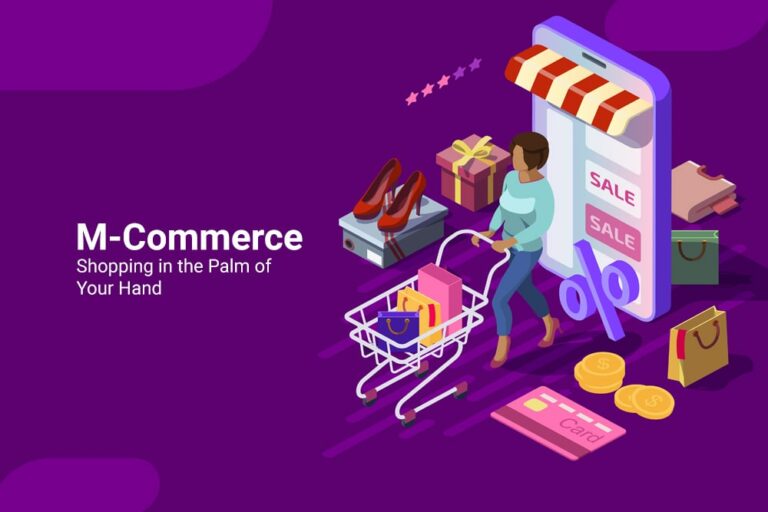In the ever-evolving world of e-commerce, one thing has become abundantly clear: personalization is the name of the game. As consumers navigate the digital marketplace, they’re no longer content with one-size-fits-all shopping experiences. Instead, they crave tailored recommendations, relevant content, and seamless interactions that cater to their unique preferences and needs. Welcome to the era of E-commerce Personalization, where data takes center stage in driving customer satisfaction to unprecedented heights.
Today’s e-commerce landscape is a far cry from its early days. Gone are the generic product listings and static websites. In their place, we find dynamic platforms that leverage the power of data to create personalized shopping journeys. In this article, we’ll delve deep into the world of E-commerce Personalization, exploring how data-driven insights are shaping the way businesses engage with customers, predict their desires, and ultimately, foster unwavering loyalty.
The foundation of E-commerce Personalization is, without a doubt, data. Every click, every search, every purchase—these are the digital breadcrumbs that customers leave behind. And it’s this trail of data that enables e-commerce businesses to understand, anticipate, and meet customer expectations like never before. From understanding customer behavior to implementing cutting-edge personalization strategies, this article will unravel the mysteries behind the data-driven revolution in e-commerce. So, whether you’re a seasoned e-commerce professional or just starting on this journey, fasten your seatbelt as we explore how Data Drives Customer Satisfaction in the realm of E-commerce Personalization.
The Power of Data in E-commerce:
In the fast-paced world of e-commerce, data is the cornerstone upon which every successful strategy is built. It’s not merely a collection of numbers and statistics; it’s the invaluable insights that allow businesses to understand their customers on a profound level. Here’s how data wields its transformative power in the realm of e-commerce:
Customer Understanding: At the heart of data-driven e-commerce lies a profound understanding of the customer. Every interaction, whether it’s a click, a search, or a purchase, leaves behind a trail of data points. By analyzing this data, e-commerce businesses gain deep insights into customer behavior, preferences, and even emotional triggers. This knowledge becomes the bedrock for personalized shopping experiences.
Personalization: The days of generic product recommendations are long gone. With data analytics, e-commerce platforms can curate personalized shopping journeys for each customer. From suggesting products based on past purchases to tailoring content to individual interests, personalization boosts customer engagement and satisfaction. It’s like having a personal shopper in the digital realm.
Inventory Management: Data doesn’t just benefit customers; it also streamlines business operations. E-commerce businesses can use data to optimize inventory management. By tracking which products are popular at specific times, they can ensure they have the right items in stock when customers want them. This minimizes overstocking and understocking issues, ultimately leading to cost savings and improved customer satisfaction.
Enhanced Customer Service: Data isn’t limited to transactional information. It can also include customer feedback and reviews. By analyzing this qualitative data, e-commerce companies can identify areas where they excel and areas that need improvement. This feedback loop enables businesses to continually enhance their customer service, thus fostering loyalty.
Predictive Analytics: Data’s predictive power is one of its most remarkable aspects. Through sophisticated algorithms, e-commerce platforms can predict customer behavior and trends. For instance, they can anticipate when a customer is likely to make a repeat purchase or when a certain product will be in demand. This foresight empowers businesses to stay ahead of the curve and deliver exceptional customer experiences.
Fraud Prevention: Data is also a crucial tool in safeguarding e-commerce from fraudulent activities. By analyzing patterns and anomalies in transaction data, businesses can identify and prevent fraudulent orders. This not only protects them from financial losses but also ensures that genuine customers have a secure shopping environment.
In summary, the power of data in e-commerce is akin to having a crystal ball that reveals customer desires and market trends. It’s the driving force behind personalized experiences, efficient operations, and proactive decision-making. As we delve deeper into the world of e-commerce personalization, the significance of data-driven strategies will become even more apparent.
Understanding Customer Behavior Through Data:
In the vast landscape of e-commerce, understanding customer behavior is akin to deciphering the code to success. Fortunately, data analytics provides e-commerce businesses with the tools they need to unlock these valuable insights and tailor their strategies accordingly. Here’s a closer look at how data helps e-commerce companies understand and respond to customer behavior:
Browsing Patterns: E-commerce websites are like virtual stores, and every click a customer makes leaves a digital breadcrumb trail. Data analytics tracks these browsing patterns, highlighting which products or categories customers are most interested in. This knowledge allows businesses to prominently display relevant items and streamline the navigation experience.
Purchase History: The history of a customer’s purchases is a goldmine of information. Data reveals not only what they’ve bought but also when, how often, and at what price point. This data helps e-commerce platforms make tailored product recommendations, create personalized email marketing campaigns, and set pricing strategies.
Cart Abandonment: Cart abandonment is a common challenge in e-commerce. Data analytics can pinpoint where in the purchase process customers tend to drop off. It could be due to unexpected shipping costs, a complicated checkout process, or simply a change of mind. Armed with this information, businesses can make necessary adjustments to reduce cart abandonment rates.
Search Queries: When customers use the search bar on an e-commerce site, they’re revealing their specific intent. Data captures these search queries, shedding light on what customers are actively looking for. This allows businesses to fine-tune their product listings, improve search algorithms, and suggest related items.
Time and Device Insights: Data also provides information about when and how customers access e-commerce platforms. Mobile shopping, for example, is on the rise. Knowing the devices and timeframes customers prefer helps businesses optimize their websites and marketing efforts accordingly.
Feedback and Reviews: Customer feedback and product reviews are valuable sources of qualitative data. Through sentiment analysis, businesses can gauge customer satisfaction and uncover areas for improvement. Positive reviews can be highlighted to boost trust and sales, while concerns can be addressed promptly.
Segmentation: Data allows for customer segmentation, which is crucial for delivering personalized experiences. Businesses can group customers based on various factors, such as demographics, purchase history, and behavior. These segments can then receive targeted marketing campaigns, product recommendations, and exclusive offers.
Seasonal and Trend Analysis: Data analytics enables e-commerce businesses to spot seasonal trends and emerging product preferences. Armed with this information, they can adjust their inventory, marketing strategies, and website content to align with customer expectations.
Adaptation and Innovation: Understanding customer behavior through data isn’t just about reacting to past actions; it’s also about anticipating future needs. By identifying emerging trends and shifting preferences, e-commerce companies can innovate and adapt their offerings to stay ahead of the competition.
In conclusion, data-driven insights into customer behavior are the lifeblood of successful e-commerce operations. They enable businesses to be proactive, responsive, and highly customer-centric. As e-commerce continues to evolve, data analytics will remain an indispensable tool for deciphering the intricacies of customer behavior and tailoring shopping experiences to meet their evolving expectations.
Implementing E-commerce Personalization Strategies:
E-commerce personalization isn’t a one-size-fits-all approach; it’s a carefully crafted strategy that uses data and technology to tailor the shopping experience for individual customers. Here are some key strategies and best practices for implementing effective e-commerce personalization:
User Profiling: Start by building comprehensive user profiles. Collect data on customers’ demographics, browsing history, purchase behavior, and preferences. The more you know about your customers, the better you can personalize their experience.
Recommendation Engines: Leverage recommendation engines powered by machine learning algorithms. These engines analyze user behavior and suggest products based on past purchases, browsing history, and what similar users have shown interest in. This is prominently seen on platforms like Amazon with their “Customers who bought this also bought” section.
Personalized Content: Tailor the content customers see based on their interests and behavior. This includes homepage banners, product descriptions, and even blog content. For example, if a customer has shown an interest in outdoor gear, showcase relevant articles and products.
Dynamic Pricing: Implement dynamic pricing strategies based on factors like demand, supply, and a customer’s browsing and purchase history. This can include personalized discounts, flash sales, and special offers targeted to individual customers.
Personalized Email Marketing: Craft personalized email campaigns that speak directly to the customer’s interests and behavior. Use their name, recommend products they might like, and send cart abandonment reminders.
Segmentation: Divide your customer base into segments based on shared characteristics or behaviors. For example, create segments for first-time buyers, loyal customers, or those who’ve abandoned their carts. Then, tailor marketing efforts for each segment.
A/B Testing: Continuously test and refine your personalization strategies. Use A/B testing to determine which personalized elements, such as product recommendations or email subject lines, resonate most with your audience.
Chatbots and Virtual Assistants: Implement chatbots or virtual assistants on your e-commerce site. These AI-driven tools can engage customers in real-time conversations, answer questions, and make product recommendations based on user queries.
Social Media Personalization: Use social media platforms to engage with your audience on a more personal level. Tailor your social media content to match customer preferences and habits.
Feedback and Reviews: Encourage customers to leave feedback and reviews, and use this data to improve the shopping experience. Address any negative feedback promptly, and highlight positive reviews to build trust.
Cross-Channel Consistency: Ensure a consistent personalized experience across all channels, including your website, mobile app, social media, and email. Customers should feel recognized and understood, regardless of where they interact with your brand.
Data Privacy and Security: Be transparent about how you collect and use customer data. Prioritize data privacy and security to build trust with your audience.
Measure and Optimize: Regularly monitor the performance of your personalization efforts. Track key metrics like conversion rates, average order value, and customer satisfaction. Use this data to refine your strategies and stay agile in responding to changing customer behavior.
E-commerce personalization is a dynamic process that requires continuous improvement and adaptation. By using data-driven insights and employing these strategies, e-commerce businesses can create a shopping experience that not only meets but exceeds customer expectations, ultimately driving loyalty and growth.
The Impact on Customer Satisfaction:
E-commerce personalization isn’t just a trendy buzzword; it’s a strategic approach that has a profound impact on customer satisfaction. Here’s how tailoring the shopping experience through data-driven personalization positively influences customer satisfaction:
Enhanced Relevance: Personalized product recommendations and content are highly relevant to the individual customer. When shoppers see items that align with their preferences and needs, they’re more likely to find what they’re looking for quickly, reducing frustration and increasing satisfaction.
Streamlined Shopping: Personalization can simplify the shopping process. For instance, returning customers can have their shipping and payment information pre-filled, saving time during checkout. This streamlined experience reduces friction, making customers more likely to complete their purchases.
Improved Product Discovery: Many customers are overwhelmed by the vast array of choices available online. Personalized recommendations guide them toward products they might not have discovered on their own. This sense of discovery can lead to excitement and satisfaction with their shopping experience.
Tailored Promotions: When customers receive personalized promotions and discounts, they feel valued and appreciated. Knowing that a brand recognizes their loyalty or preferences through targeted offers creates a positive perception of the company.
Reduced Cart Abandonment: Cart abandonment is a common challenge in e-commerce. Personalized reminders, such as emails or notifications, can gently nudge customers to return and complete their purchase, reducing the frustration associated with incomplete transactions.
Increased Engagement: Personalized content and recommendations encourage customers to engage more deeply with your website or app. This increased engagement can lead to longer session times, more pages viewed, and a greater likelihood of conversions.
Customer Loyalty: Personalization fosters a sense of loyalty. When customers feel that a brand understands and caters to their preferences, they are more likely to return for future purchases. This loyalty translates into higher customer lifetime value and recurring revenue.
Positive Feedback: Satisfied customers are more likely to leave positive feedback and reviews. These testimonials serve as social proof for new shoppers, further boosting trust in your brand and driving additional sales.
Word-of-Mouth Recommendations: Happy customers are more inclined to recommend your e-commerce site to friends and family. This word-of-mouth marketing can expand your customer base and increase overall satisfaction.
Data-Driven Customer Service: Personalization enables your customer service team to provide better assistance. When representatives have access to customer profiles and purchase history, they can offer more relevant support and solutions, resolving issues faster.
High Retention Rates: Personalized experiences build long-term relationships. Customers who feel satisfied and understood are less likely to switch to competitors, resulting in higher retention rates.
Brand Trust: Trust is a critical factor in customer satisfaction. When a brand consistently delivers personalized, high-quality experiences, it builds trust with its customer base. This trust extends beyond individual transactions to overall brand loyalty.
In summary, e-commerce personalization is a powerful tool for enhancing customer satisfaction. By leveraging data and technology to tailor the shopping journey, businesses can create an environment where customers feel valued, understood, and delighted with each interaction. This not only leads to short-term gains but also establishes a foundation for long-term success and growth in the competitive world of e-commerce.
Conclusion:
In the rapidly evolving landscape of e-commerce, where choices are abundant and competition is fierce, customer satisfaction stands as the cornerstone of success. E-commerce personalization, driven by data and powered by advanced technologies, has emerged as a game-changer, enabling businesses to elevate the shopping experience to new heights.
The power of data in e-commerce cannot be overstated. It allows businesses to understand their customers in unprecedented ways, from their preferences and purchase history to their browsing behavior and demographic information. With this wealth of data at their disposal, companies can craft personalized experiences that resonate with each individual shopper.
Understanding customer behavior through data paves the way for highly targeted and relevant content, product recommendations, and marketing campaigns. Shoppers are no longer overwhelmed by endless choices; instead, they are guided toward products and services that align with their needs and desires. This sense of guidance and relevance not only streamlines the shopping process but also creates moments of delight as customers discover products they might have otherwise missed.
Implementing e-commerce personalization strategies requires a tech-savvy approach. Machine learning algorithms, artificial intelligence, and predictive analytics are harnessed to deliver real-time recommendations and personalized content. These technologies adapt and refine their recommendations over time, ensuring that personalization remains a dynamic and evolving force in the e-commerce realm.
The impact on customer satisfaction is profound. Enhanced relevance, streamlined shopping experiences, tailored promotions, and reduced cart abandonment rates contribute to happier customers. In turn, satisfied customers are more likely to become loyal patrons, leave positive feedback, and recommend your brand to others. The result is not just increased revenue but the building of trust and long-term relationships.
As we look to the future of e-commerce, personalization will continue to evolve. Businesses will harness data in even more sophisticated ways, and AI-driven experiences will become increasingly seamless and intuitive. The e-commerce landscape will be characterized by brands that prioritize understanding and delighting their customers, fostering loyalty, and maintaining a competitive edge.
In conclusion, e-commerce personalization is not a mere trend; it is a fundamental shift in how businesses connect with their customers. By leveraging the power of data and technology, companies can craft personalized journeys that drive customer satisfaction, boost loyalty, and secure their place in the future of e-commerce. As the digital shopping experience continues to evolve, one thing remains clear: in the realm of e-commerce, design matters, and personalization reigns supreme.




